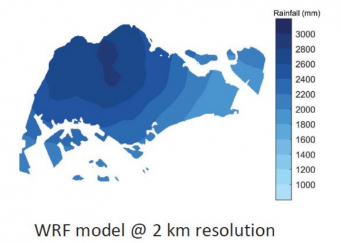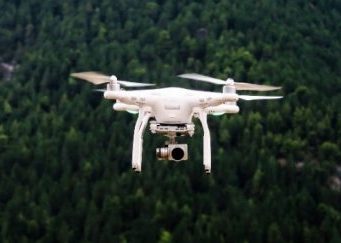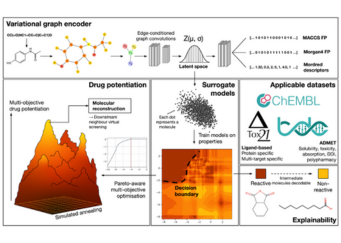Using the ASPIRE 1 supercomputer, the tool was used to create a complete three-dimensional (3D) air flow simulation encompassing Singapore’s built environment.
A research team from A*STAR and HDB helped create a high-resolution modelling and simulation tool for built environments to aid in town planning. Dr Poh Hee Joo (Institute of High Performance Computing, IHPC, A*STAR), Dr Koh Wee Shing (IHPC, A*STAR), Mr Fachmin Folianto (Institute for Infocomm Research, I²R, A*STAR) and Mr Tan Sze Tiong (Housing & Development Board, HDB) developed the Integrated Environmental Modeller (IEM) which won the PTA at this year’s President’s Science & Technology Awards (PSTA) ceremony.
Other environmental factors that can be included in the virtual simulation include solar irradiance, wind flow and air temperatures. The unique feature of the simulation is that it combines these multiple effects into one model compared with models in the market that only assess one to two environmental factors. This capability produces simulations that mirror real-life, everyday environments more closely. The tool has also been verified and calibrated with ground truth measurements under typical urban conditions.
“The most significant innovation of IEM is its integration,” said Dr Poh Hee Joo who led the research team that won the award. The IEM is the first integrated and scalable tool to combine all key environmental physics and their complex interactions allowing the effects of buildings, terrain, vegetation, water bodies, road pavements and urban elements to be fully captured in a single unified platform. “The work was also done entirely in-house and with open source codes based on the latest high performance computing (HPC) technology.”
“The computationally scalable IEM also pushed the technological boundaries in supercomputing by implementing the first ever 3D air flow simulation at 10-metre horizontal resolution, which included all the buildings in Singapore!” said Dr Poh adding that the simulation took only five days to complete using some 6000 processors of NSCC’s ASPIRE 1 supercomputer.
The long term vision for the IEM tool is to morph it into a highly accurate “Digital Twin” model for use with any urbanised area, which is capable of accounting for various factors affecting the urban environment. When coupled with other indices such as a quality of life index, IEM could be used to plan for highly sustainable and liveable environments, and future cities.
The PSTAs are the highest honours bestowed on exceptional Singapore research scientists and engineers for their excellent achievements in science and technology. The annual awards recognise and celebrate outstanding and invaluable contributions by individuals or teams to the R&D landscape here. Apart from the PTA, the project also garnered other awards including the ASEAN Outstanding Engineering Achievement Award and the Minister for National Development’s R&D Merit Award.
NSCC NewsBytes December 2019
Other Case Studies
Enhancing Weather Prediction in Singapore: Leveraging Climate Model Simulations for Precision
Researchers from NUS Tropical Marine Science Institute are leveraging supercomputing to fine-tune Weather Research and Forecasting (WRF) Model and downscale hundreds of years of...
Keeping drones safe in urban airspaces
Researchers from NTU tap on high performance computing to identify hazardous airspaces through urban weather simulations in order to facilitate effective route planning and...
Advancing Drug Discovery Research using NSCC HPC resources
Researchers from Nanyang Technological University (NTU) are applying variational graph encoders as an effective generalist algorithm in computer-aided drug design (CADD)....


